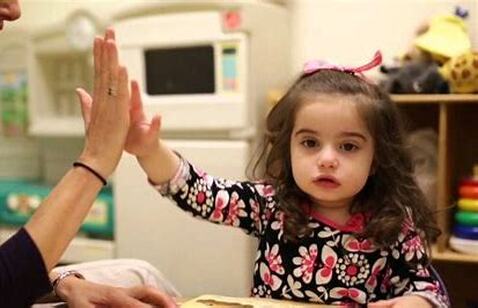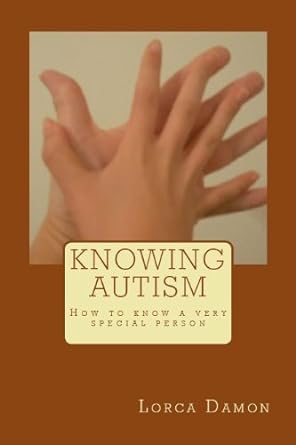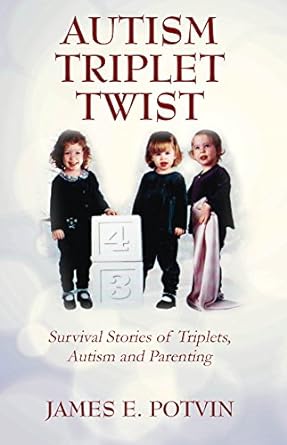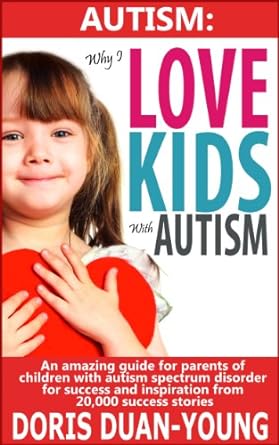What is the most concerning or destructive thing that is going on right now in your child’s world?
At this point in the BLOG, let’s go back to ‘symptoms’, how to recognize them, and how to prioritize them. Often, with girls, the symptoms may be confusing.
Luker, S. (2024) website HOME Page. “Prioritize your child's 'needs' and your 'wants'. Try teaching your child age appropriate 'developmental skills' that are non-invasive. See what works and what doesn't. This will help you when eventually, you will have to choose from available programs, therapies, and services which are offered. Some are quite expensive, so understand your child well enough to know what will probably work and what absolutely won't. You can only know this by trying some things on your own. On the MENU, you will find some ideas on where to start to discover who your child is 'behind' the autism.”
The following is from Luker, S. (2024); UNIT 2 – Why Is It Autism? UNIT 2 – CHAPTER 2 – Denial & Misdiagnosis
“So much of the child’s diagnosis depends on parents and caregiver reporting. In mild cases of Autism, parents aren’t always aware that anything is truly wrong with their child, even when compared to their siblings. Autism awareness has helped the world understand the importance of parent reporting, early identification, and early intervention.”
Mandy (2016) fears that those who most need ‘state’ services won’t get them. He feels that the real issue is ‘threshold’, the ‘level’ of symptoms to which everyone can agree. His concern is that ‘borderline’ people and those assessed at lower ‘levels’ of measure will be left out.
Mandy (2016) continues – And, increase better awareness of how females seem to cope with social situations differently than males. He fears that females, while able to ‘forge’ an ‘identity’ which allows them to ‘pretend to be normal’, they are subsequently putting themselves at risk for damaging behavior.
Damon, L. (2012) 10% My daughter Carrie actually has an additional diagnosis of juvenile bipolar disorder on top of her autism. We thought for a long time that her wild mood swings and frequent screaming meltdowns were just another symptom of autism that we would have to learn to accept.
…(When) we began medication for the symptoms. Carrie improved almost immediately and I could still cry thinking back to the years she spent suffering with uncontrollable emotional roller coaster rides because…we could have done something about it much sooner if we had been more aware of what is autism and what isn’t.
< My Thoughts > “What is autism and what isn’t.”
Many times, those with autism have two or more chronic conditions they are dealing with. My son went for years with an undiagnosed rare seizure disorder. This wasn’t a result of his autism, but is often seen as an accompanying problem. So when in doubt, visit a neurologist. But, get a referral from your primary physician to follow insurance protocol and prevent a huge co-pay.
Burkett, et al. (2015) talk about cultural factors such as health care access and Autism Spectrum Disorder symptom interpretations which are impacting and delaying diagnosis/treatment for African-American children with ASD. Plus, they say that this population is 5.1 times more likely to receive a misdiagnosis of conduct disorder or mental retardation.
Burkett continues – Many families narrated their concerns when seeking answers about their child’s challenges. They felt that Health Care Professionals (HCPs) either ‘judged them’ and/or questioned their ability to deliver therapeutics at home. This added a barrier to building a working relationship. There were ‘signs of disrespect’ and of HCPs acting in a way that caused families to postpone seeking further health care for their child. To counter this, some families set about to change their communities by helping one another and by identifying those HCPs who helped them get in-home therapies and tried to build provider-patient relationships.
Potvin, J. (2013) 20% She walked on her tip toes most of the time. We drove her to the autism center at the University of Michigan to get their opinion.
< My Thoughts > “She walked on her tip toes most of the time.”
Just because a child mostly walks on tip toes, doesn’t automatically mean that autism is the cause. It may take several provider visits to determine the exact cause. But because it creates an unusual and unsteady gait, don’t ignore the problem, if your child doesn’t move beyond this type of walking.
Edelson, S. M. (2022) tells us that – Toe walking and walking with an unusual gait is often seen with children with autism. He continues that toe walking is quite common in young children, but if it persists beyond the age of 3 it may be associated with neurological immaturity. He points out that there are several interventions. One is to have physical therapy to stretch out the tendon and prevent walking with legs stiff. Another successful approach is to fit the child with Prism Lenses which are part of a vision training program. The last intervention is more invasive and that is wearing leg-casts or to have tendon surgery.
Potvin, J. (2013) 20% Sarah was fitted with orthopedic shoes and leg braces. After a couple of months, her legs and feet straightened. Her braces were removed.
21% Sarah made little eye contact. She did not want to play with the toys in the room. She made some odd noises and flapped like an eagle. She did not look to us for guidance.
The physician emerged from the secluded observation room. Then he spoke. The doctor said, “Sarah has autism.” We did not know anything about autism, except there was no known cause or cure. It wasn’t like the chicken pox that would go away. The doctor said he observed multiple autistic behaviors while in with Sarah.
Duan-Young, D. (2014) 35% Aimee had recently come to live in our group home. Unlike Debi and Janey, Aimee was not able to verbally communicate. Her language skills were not developed.
First the bed clothes were ripped off the bed. The sound Aimee let out was like something you’d imagine a wild animal would make. Next, the mattress came off the bed.
When Aimee became frustrated, or when she wanted something and didn’t know how to express herself, she would do the only thing she knew. She would become physically violent and destroy whatever was near her.
From a behavioral analyst’s point of view, every behavior has a function, or intent. One of the ‘mistakes’ parents make when children calm down after a tantrum is ask them “Why did you do that?” “Didn’t I tell you that you’re not supposed to do that.” “What’s wrong with you?”
< My Thoughts > “What’s wrong with you?”
Sometimes this phrase just escapes parent’s lips, without thought of impact on the child. Sadly, the child is probably just as puzzled by his/her behavior as the parent.
Matson & Rivet (2007) discuss the seriously challenging behaviors which impede learning and compromise the child or adult living and learning in more independent settings; such as family or group homes and public schools. They describe the challenging behaviors as ‘self-injurious behavior’, ‘aggression & destruction’, as well as ‘seriously disruptive behaviors’.
Self-injurious behavior – Harming self by poking, hitting, pinching, hair pulling, scratching and other behaviors.
Aggression and destruction – Kicking and throwing things, severely banging, hitting and yelling at others.
Seriously disruptive behaviors – Defecating, urinating and removal of clothing in public, running away from caregiver, repeated inappropriate vocalizations and body movements.
< My Thoughts > “Seriously disruptive behaviors…”
When behaviors are so serious, there is little left for the parents to do, but address them; for the safety of the child, self, and other family members.
References:
Bodfish, J. W. (2004). Treating the core features of autism: are we there yet?; Retrieved online from – https://pubmed.ncbi.nlm.nih.gov/15666340/
Burkett, K., et al. (2016). Parenting African American Children With Autism: The Influence of Respect and Faith in Mother, Father, Single-, and Two-Parent Care; Retrieved online from – https://journals.sagepub.com
Damon, L. (2012). Knowing Autism; eBook Edition.
Duan-Young, D. (2014). Autism: Why I Love Kids with Autism; eBook Edition.
Edelson, S.M. (2022). Toe-walking and ASD; Retrieved online from – https://autism.org/toe-walking-and-asd/
Luker, S. (2024); Know Autism, Know Your Child with < My Thoughts > by Sara Luker; Retrieved online from – www.sarasautismsite.com
Mandy, W. (2016). Towards sex- and gender-informed autism research; Vol. 21: Issue 6. Retrieved online from https://journals.sagepub.com/doi/full/
Matson & Rivet (2007). Social-skills treatments for children with autism spectrum. Retrieved online from – National Institutes of Health (NIH) (.gov) https://pubmed.ncbi.nlm.nih.gov › ...
Potvin, J. (2016). Autism Triplet Twist: Survival Stories of Parents, Triplets and Autism; eBook Edition.
Note: DISCLAIMER – Autism ‘intervention’, as with the phrase ‘Early Detection / Early Intervention’, may simply mean to attempt an ‘action’, or attempt to ‘change a course’ or ‘trajectory’ of the person’s autism. Any expectation for a successful ‘change’ must have the cooperation of the participant, the parent, and/or the assigned therapist. Words such as, ‘intervention’, ‘treatment’, ‘therapy’, ‘service’, or ‘program’ imply ‘cure’, or ‘long-term’ positive effect. That is NOT my intention here, and all information is presented without intent or suggestion of status or effectiveness.
End of DAY TEN. Note: Excerpts from the books – (13% indicates location in the Kindle version of the eBook, instead of page numbers).
Sharing of my website and BLOG Comments welcomed. Thank-you to those of you who have sent comments... much appreciated!
Regards,
Sara Luker





 RSS Feed
RSS Feed